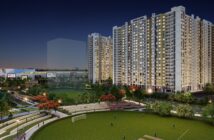 As Central Business Districts (CBD) begin to gradually lose their sheen against alternative locations because of their inability to offer Grade A buildings at competitive rates, retrofitting emerges as a preferred option (as compared with redevelopment) for quality improvement to increase the attractiveness and economic life of existing old buildings.
As Central Business Districts (CBD) begin to gradually lose their sheen against alternative locations because of their inability to offer Grade A buildings at competitive rates, retrofitting emerges as a preferred option (as compared with redevelopment) for quality improvement to increase the attractiveness and economic life of existing old buildings.
The rents of Grade B buildings are observed to be 20-38% less than Grade A buildings. Even If 30% of the current Grade B stock in cities across India is retrofitted into Grade A space, an additional INR 2.9 billion of total revenue can be generated.
Jones Lang LaSalle’s latest research report Retrofitting India’s Central Business District aims at throwing light on the huge potential, benefits and other such interesting aspects of Retrofitting.
INTRODUCTION
The CBDs of prime cities such as Delhi and Mumbai have been the hub of the nation’s economic activity over the past few decades. Some commercial buildings within India’s CBDs are centuries old and are considered to be heritage structures due to their historical and architectural significance. These properties are typically utilised as government offices or as the head office of large corporate occupiers from the shipping, manufacturing, banking and insurance sectors.
A CBD is deemed as the most valuable business location within a city and is characterised by high land and property prices. High demand for CBD office locations arise from numerous factors, including established business ecosystems, accessibility to services, superior infrastructure and prestige of address. Residential and retail locations within and bordering CBDs are often also considered to be prime locations.
A majority of office buildings in India’s CBDs are at least three decades old, with run-down structures arising from poor maintenance. The resulting poor operational efficiency leads to higher operating costs for occupiers of these buildings. With a severely limited supply of new office space, tenants located in India’s CBDs have traditionally been forced to occupy existing buildings that are low on quality and high on operating costs.
The recent global economic downturn has increased pressure on all businesses to reduce costs. This remains true even as some businesses in India are showing signs of growth during a local economic recovery. In such a climate, the attractiveness of CBDs across India is diminishing relative to neighbouring micro-markets, which can offer larger office spaces of higher quality at comparatively lower costs. Indeed, vacancy levels in India’s CBDs have shown an increase as tenants continue to show a preference for higher quality, lower cost office space found in alternate locations within the city.





